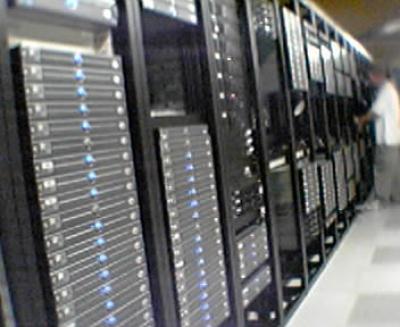Data Centres To Get Breath Of Fresh Air

IT administrators are looking for cheaper and more efficient ways to cool their facilities as the global recession forces businesses to slash budgets,
The Green Grid consortium is helping businesses look at another tool for reducing the costs of cooling their data centres: the air outside of the facilities.
The Green Grid has unveiled a free online database tool and maps designed to help data centres determine if outside air—also known as free cooling—can be used to drive down the rising costs of cooling data centres. The Green Grid tool can be accessed here.
Power and cooling costs are a key concern for IT administrators who are under pressure to increase data center performance while cutting budgets. With smaller and more powerful servers and processors being packed into data centres, the cost of keeping the technology cool is increasing.
The Green Grid was created in 2007 to push for greater energy efficiency in data centres and other computing ecosystems. Board members include chip makers Advanced Micro Devices and Intel, OEMs IBM, Hewlett-Packard, Dell and Sun Microsystems, and EMC, Microsoft and APC. The group has more than 150 members.
To use the free cooling tool from the Green Grid, users in the United States and Canada enter a ZIP code and data such as local energy costs, IT load and facility load to determine what kind of savings they can get from using the available outside air to help cool the data centre.
Other regions will be incorporated in the future, the organisation claims.
The tool also can be used to determine savings that can be garnered using water-side economisers, or devices that use water cooled by a cooling tower. In addition, Green Grid members will be able to look at a high-resolution graphical map of free cooling throughout the United States and Canada.
Maps by specific ZIP codes can be obtained from Weatherbank, a meteorological consulting company.
Roger Tipley, a Green Grid board member and an engineering strategist with HP, said the idea of using outside air to help cool a data centre is just now getting attention. For example, the Lawrence Berkeley National Laboratory, which does research on the world’s energy challenges, is considering building a data centre next to San Francisco Bay to take advantage of the cool air in that area, Tipley said.
Using outside air to help cool data centres isn’t possible in all parts of North America, he said. In some places, the air is too hot, in others, too cold, and in some the air is too dry. However, if free cooling can be used—for example, if the air is too cold, hot air already being generated by the systems can be used to warm the air enough for use—it is a benefit, Tipley said.
“If you can bring in air directly … it obviously saves a lot of money,” he said.
The Green Grid’s free cooling tool uses information from 2,186 weather stations throughout the United States and Canada, and contains all hourly observations taken from 1999 to 2008. The count of hours is then divided by 10—the total years of data—to come up with the total number of hours available of free cooling per year. The numbers of hours will always range between 0 and 8,760, according to the Green Grid.
This tool could be a boon for many companies, Tipley said.”The majority of the world’s major cities are along oceans, which moderate the temperatures,” he said. “Plus, it’s humid, so it’s a double bonus.”
Power and cooling costs also have changed the way businesses look at where they’re going to put their data centers. Where once the issue was proximity to the main office, now companies are looking at such issues as getting closer to power supplies.
“We used to always have them right in a room right next to us,” Tipley said. “But with the Internet, who cares where it is, as long as you have the security around it.”